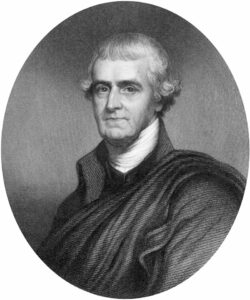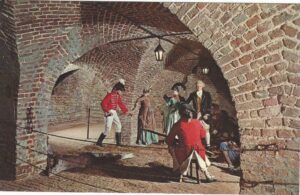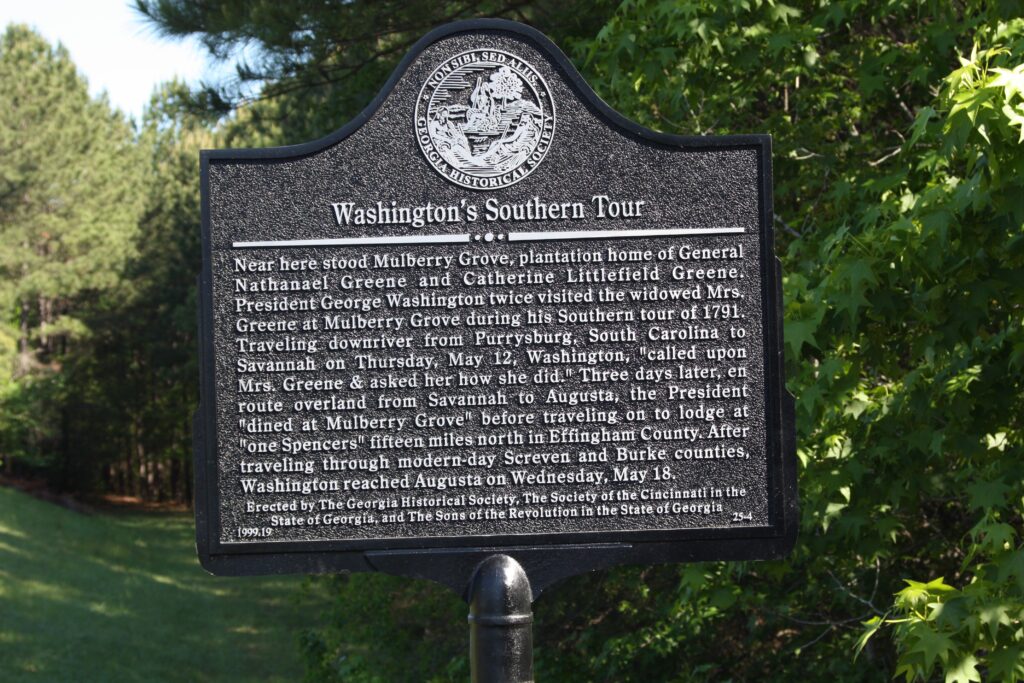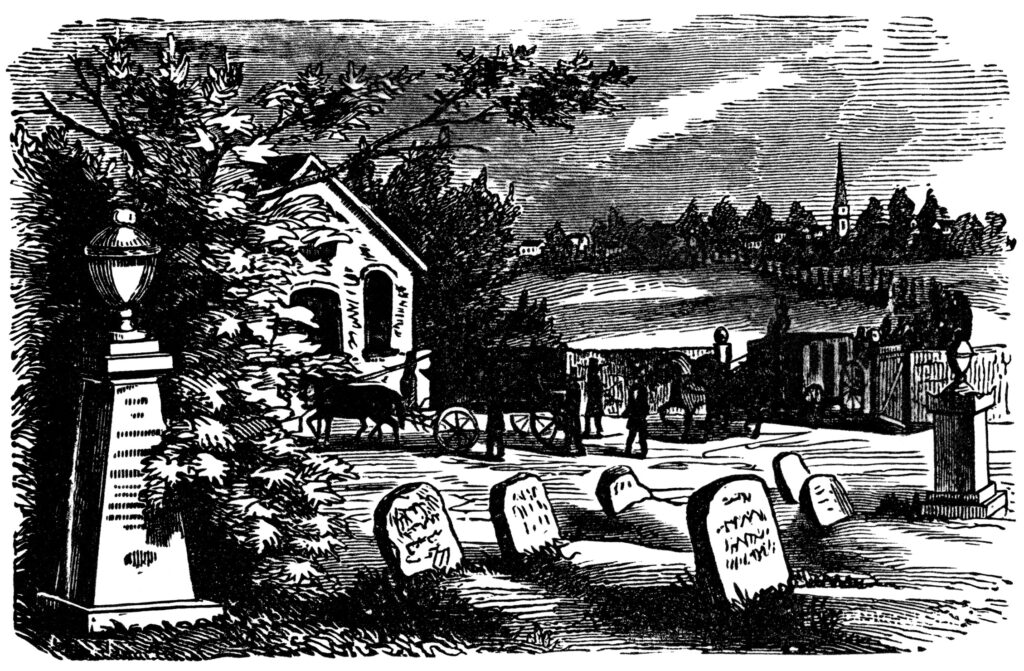Dear Patriot Reader, this story is for those who know The Republic is suffering. May you all become your own Morning Stars of Liberty. — S.S.S.
Although Memorial Day has passed, I hope everyone’s was reflective, peaceful and about togetherness. I made mine of some remembrances in Bonaventure Cemetery, but thought it would be timely to share my take on a storied figure who has always inspired me both as a person and then in terms of the perspective of The United States of America. His story is one for reflection and inspiration more than ever. And whereas South Carolina will always be known for Sir Francis Marion, aka, “The Swamp Fox,” Georgia is home to a man whom Marion saw as peer and who would come to earn his own legendary nickname. Time has been made dumb to it but we seek in our own humble efforts, to help restore the legendary memory. When scanning over the life’s work of Noble Wimberly Jones, it quickly becomes a question of “Where does one begin?”
He was for one, the first child, whom in the new year of 1733, then just 9 years of age, and after 10 weeks at sea, stepped off the ship called Anne and helped to settle Georgia atop Savannah’s Bay Street. Nearly day one, he befriended the Indian King, Tama-chi-chi’s nephew, Toonahowi, having many adventures together before Toonahowi needlessly died around St. Augustine at 17. As a boy and young man, Noble learned crafts and customs of the Muscogee-Creek Nation, including aspects of their healing arts. Because of experiences under his father, the colony physician, Noble Jones, son Noble Wimberly had gotten hands-on with the early chapters of Yellow Fever and while having no formal training, he was considered a physician at an impressive 13 years of age.
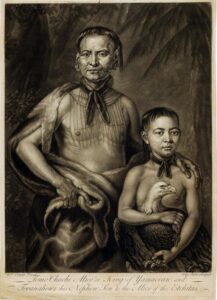
Indian King Tamachichi (Age 90), His Adopted Son, and Noble’s childhood pal, Toonahowi (Age 10) with pet eagle, 1734
When just into his mid-teens, Noble Wimberly joined Georgia Founder, James Oglethorpe’s Regiment of Foot, and spent many a moment around St. Augustine and other places both killing, capturing Spanish and Indians in cahoots against them. By the time most youths today are acquiring their driver’s license, and championing video games, he was a well heeled physician and veteran of community protection. Later, because of these exploits, and I’d presume, some sort of Masonic brotherhood connection, General George Washington invited him to be a surgeon in The Continental Army where he would excel and find his greater purpose. Believe it or not, Pre-Civil War, his name was heralded as one of the greatest, if not, the greatest hero of Valley Forge and yet, like the name of his father Noble Jones, it went lost after less things Southern were taught to America’s schoolchildren. The same for his life as an earlier patriot, and member of The Council of Safety. Jones either lead or organized a band of “Liberty Boys,” who in 1775, broke into a parapet powder magazine beneath what is now, “The Pirate House”, stealing 600lbs worth, shipping them to Washington at Yorktown, aiding his defeat of Cornwallis. Within 2 years, he was offered a seat within The Continental Congress but his father’s languishing health kept him from traveling. Yet, Noble Wimberly participated in the State Constitution covention in 1777. In fact, when the Provincial Congress became the House of Assembly, he was elected its Speaker.
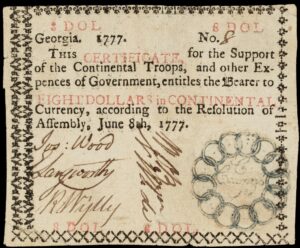
In the present, we have some luxury to talk or write rather plainly about such historical figures and events to better understand their elements of connection. Bear in mind that during the actual Revolutionary War hours of Noble Wimberly’s life, in the streets of New York, Boston, Georgetown, Charleston, Savannah, just about anywhere there were British spies, it became so dangerous saying his name, it could mean your questioning, torture or jailing. He was for all intensive purposes, a man on the run. Its hard to say exactly where and when his rebel reputation could’ve become your own foil way of simple discussion, but I would personally point to his Valley Forge raids on British camps for food and supplies to aide Washington’s men. Doing so with his fellow raider and future Savannah neighbor, “Mad” Anthony Wayne. It’s my contention, Noble Wimberly Jones became one of the most wanted men on The British Armed Force’s Wanted List. So colonials, in order to speak of him in any manner, critical or glowingly, had to go “underground” with the language of his conversation by using his code name – “The Morning Star of Liberty.” At first, spies thought this may be a song or a poem, layered with messages, or perhaps a clandestine newspaper fanning revolutionary thought. They weren’t actually certain what it meant less to say they heard it bubbling in the streets of Charleston, SC in 1778 and through their spy network, learned that it had been a reference to Noble Wymberly Jones and he was working in the city as a doctor under an assumed name. They sprang a trap for him and put Jones in Charleston’s Provost Dungeon. I’ll admit that some of the finer details here are fuzzy and like all things with great men, have been debated among historians. One could argue that he might be executed, which would in my view, have martyrd him. Moreover, if The British lost major leaders in the Southern end of the fight, he was extremely desirable for prisoner swapping as they often did. I can’t exactly say why they kept him in said situation for what I estimate was 2 years, less to say they knew that if he escaped, that as an organizer, he was beyond the capabilities of most to keep damaging their efforts. They all at once feared him, respected him and needed him to be kept alive. What is known? And probably due to all-of-the-above aforementioned? There was a standing order for Provost Dungeon guards, that 4 men were to point their muskets at him point blank range, 24 hours a day! Incredible!
Back at home, Savannah had lost to The British during the war’s 2nd Bloodiest Battle, The Siege of Savannah, and the enemy would hold tight behind the walled city until 1781. This year really represents the end of Savannah’s involvement. Some historians offer that Noble Wimberly was delivered briefly to St. Augustine and there in a prisoner exchange, was transferred to Philadelphia. He practiced medicine with the distinguished Dr. Benjamin Rush and officially became Georgia’s Delegate to The Continental Congress. When eventually returning to Savannah in 1783, he was once more re-elected as The Speaker of The House of Assembly but during one volatile session where he attempted to quell a mob, was wounded by an attacker’s sword! This appears to have caused him to resign the office, returning once more to Charleston where he practiced medicine until 1788. It could be said from some residence Noble Wimberly watched the literal Birth of The Nation with the knowing that he’d given every bit of himself to the struggle for it. For those that have forgotten, or sadly no longer hear the expression, that is what “Founding Fathers” spiritually means in some regard. Less some of the ultra famous names, many others were killed, had their fortunes stolen, their wives and children executed and died badly in obscurity. They did not live to see the completion as it were.
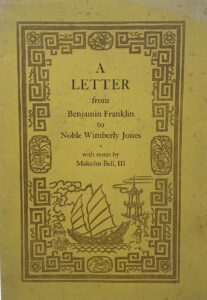 It would be later in 1788 that Noble Wimberly traveled home to Wimberly Plantation, currently most of the neighborhood known as The Isle of Hope. All that remains of his house overlooking a corner of Skidaway River is a tabby wall segment in the basement of a bright pink house. Many moons ago when I was 19, stopping my bike in front of it, I all but dumbfounded the owner watering plants in the yard as I asked whether or not this was true? They promptly rewarded me with a tour of their basement and felt that I’d touched some greatness there that day. It was in some sense from his home neighboring his boyhood Wormsloe, that Noble Wimberly began to organize the preparations and festivities for the arrival of George Washington in Savannah in 1791. The city gave Washington his own city square, he visited other old friends like Caty Littlefield Greene, her neighbor Mad Anthony Wayne, then staying with General Lachlan McIntosh who had once scandalized Washington’s Army by killing Declaration of Indpendence signer, Button Gwinnett, in a regretful duel. These were all old comrades in arms, in some respects, fellow Masons, and who’d seen much in the fight. I wonder exactly what they spoke of and whether or not they did so drinking Savannah’s fabled Artillery Punch. To have been a fly on the wall, or a diary page.
It would be later in 1788 that Noble Wimberly traveled home to Wimberly Plantation, currently most of the neighborhood known as The Isle of Hope. All that remains of his house overlooking a corner of Skidaway River is a tabby wall segment in the basement of a bright pink house. Many moons ago when I was 19, stopping my bike in front of it, I all but dumbfounded the owner watering plants in the yard as I asked whether or not this was true? They promptly rewarded me with a tour of their basement and felt that I’d touched some greatness there that day. It was in some sense from his home neighboring his boyhood Wormsloe, that Noble Wimberly began to organize the preparations and festivities for the arrival of George Washington in Savannah in 1791. The city gave Washington his own city square, he visited other old friends like Caty Littlefield Greene, her neighbor Mad Anthony Wayne, then staying with General Lachlan McIntosh who had once scandalized Washington’s Army by killing Declaration of Indpendence signer, Button Gwinnett, in a regretful duel. These were all old comrades in arms, in some respects, fellow Masons, and who’d seen much in the fight. I wonder exactly what they spoke of and whether or not they did so drinking Savannah’s fabled Artillery Punch. To have been a fly on the wall, or a diary page.
Noble Wimberly and Washington still had more business together. Effectively in that year, they both worked to lay down the groundwork for what later became known in Augusta, Georgia, as The Medical College of Georgia. It is no small thing that Washington felt such an institution in Georgia was important and in my view, saw his elder Noble Wimberly’s life story, that of his father Noble Jones, as inspiration for it. Noble would remain a professor and a trustee there until his death at 83 or 84 years of age. At that stage in his life, his wife, Sarah, and he, had already outlived 13 of their 14 children. The one that survived, George, would act as one of the first U.S. Senators and is buried next to his parents in the same plot in Bonaventure Cemetery. It is fascinating to me that this Founding Father, would come to his own death after 5 exhaustive back to back nights of delivering babies! I can only wonder who those children may have been, whether or not they all lived to tell that such love and obstetric care had been given them by a man who had risked so much to see American born unto this land and in hearts across the world. I truly hope they lived to a ripe old age and bragged endlessly if just because they now could! One of God’s great servants of LIFE and LIBERTY and THE PURSUIT OF HAPPINESS had made it all possible for them! And for me! For ALL OF US!
[videopress M8hGJUgw hd=”true” loop=”true”]
Standing grave side many days with my visitors, I cannot help but to gloat and feel a bit dangerous myself talking openly about the exploits and long life of “rebel,” Noble Wimberly Jones. As a proud American storyteller, it is my selfish, infernal desire, to make his story to light some new fire in a young mind or a lost fire in an old one. I was fortunate as a child when the book and film Johnny Tremaine did so in mine, and while I found the fictional embodiment in the real stories of many American patriots, I was never more gladdened to find it in one who should be far more obvious to everyone.
Perhaps one day I will voyage a greater attempt to connect the dots of the life and times of Noble Wimberly Jones. There are records gone lost, records destroyed, and records still yet to be found. And when it comes to this very long lived man of accomplishment and mystery, its a case of what the existing records don’t say, but in my view, point to or are trying to say, but cannot and did not. These public men lived dangerous lives really. They took secrets to their graves and there are moments where I feel Noble Wimberly Jones’ winking at me with a smile and a nod, knowing that he cannot share them even now but appreciates my wanting to know the whole story. As I often tell my visitors, “If God offered me only one person in Bonaventure to reanimate the bones of and spend time with that person, it would be easily answered in the company of Noble Wimberly Jones.”

